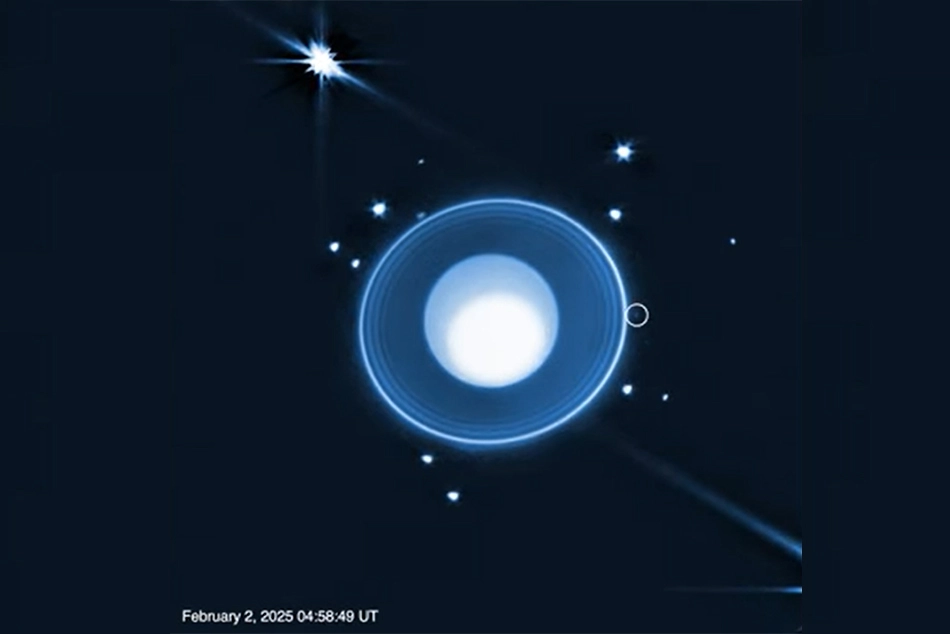
Discovered: Previously unknown Moon orbiting Uranus
Astronomers using James Webb Space Technology (JWST) have discovered previously unknown Moon orbiting Uranus, American space agency NASA said

Washington: Astronomers using James Webb Space Technology (JWST) have discovered previously unknown Moon orbiting Uranus, American space agency NASA said.
The detection was made during a Webb observation February 02, 2025, NASA said.
The new Moon orbits just outside Uranus' main ring system. With this discovery, the total number of Uranus Moons has gone to 29.
"Tiny, Small and Faint"
NASA also said the new Moon orbiting Uranus is tiny, and extremely small and faint - just 6 miles (10 kilometers) in diameter, the scientists estimate.
This explains why it evaded detection from both the Hubble Telescope and the Voyager 2 spacecraft, which flew past Uranus in 1986.
“This object was spotted in a series of 10 40-minute long-exposure images captured by the Near-Infrared Camera (NIRCam),” said Maryame El Moutamid, a lead scientist in SwRI’s Solar System Science and Exploration Division based in Boulder, Colorado. “It’s a small moon but a significant discovery, which is something that even NASA’s Voyager 2 spacecraft didn’t see during its flyby nearly 40 years ago.”
“No other planet has as many small inner moons as Uranus, and their complex inter-relationships with the rings hint at a chaotic history that blurs the boundary between a ring system and a system of moons,” said Matthew Tiscareno of the SETI Institute in Mountain View, California, a member of the research team. “Moreover, the new moon is smaller and much fainter than the smallest of the previously known inner moons, making it likely that even more complexity remains to be discovered.”
"14th member of the intricate system of small Moons"
The new Moon is the 14th member of the intricate system of small Moons orbiting inward of the largest moons Miranda, Ariel, Umbriel, Titania, and Oberon.
“It’s located about 35,000 miles (56,000 kilometers) from Uranus’ center, orbiting the planet’s equatorial plane between the orbits of Ophelia (which is just outside of Uranus’ main ring system) and Bianca,” said El Moutamid. “Its nearly circular orbit suggests it may have formed near its current location.”
A name for the newly found moon will need to be approved by the International Astronomical Union (IAU), the leading authority in assigning official names and designations to astronomical objects.
This discovery comes as part of Webb’s General Observer program, which allows scientists worldwide to propose investigations using the telescope’s cutting-edge instruments.
Follow ummid.com WhatsApp Channel for all the latest updates.
Select Language to Translate in Urdu, Hindi, Marathi or Arabic







